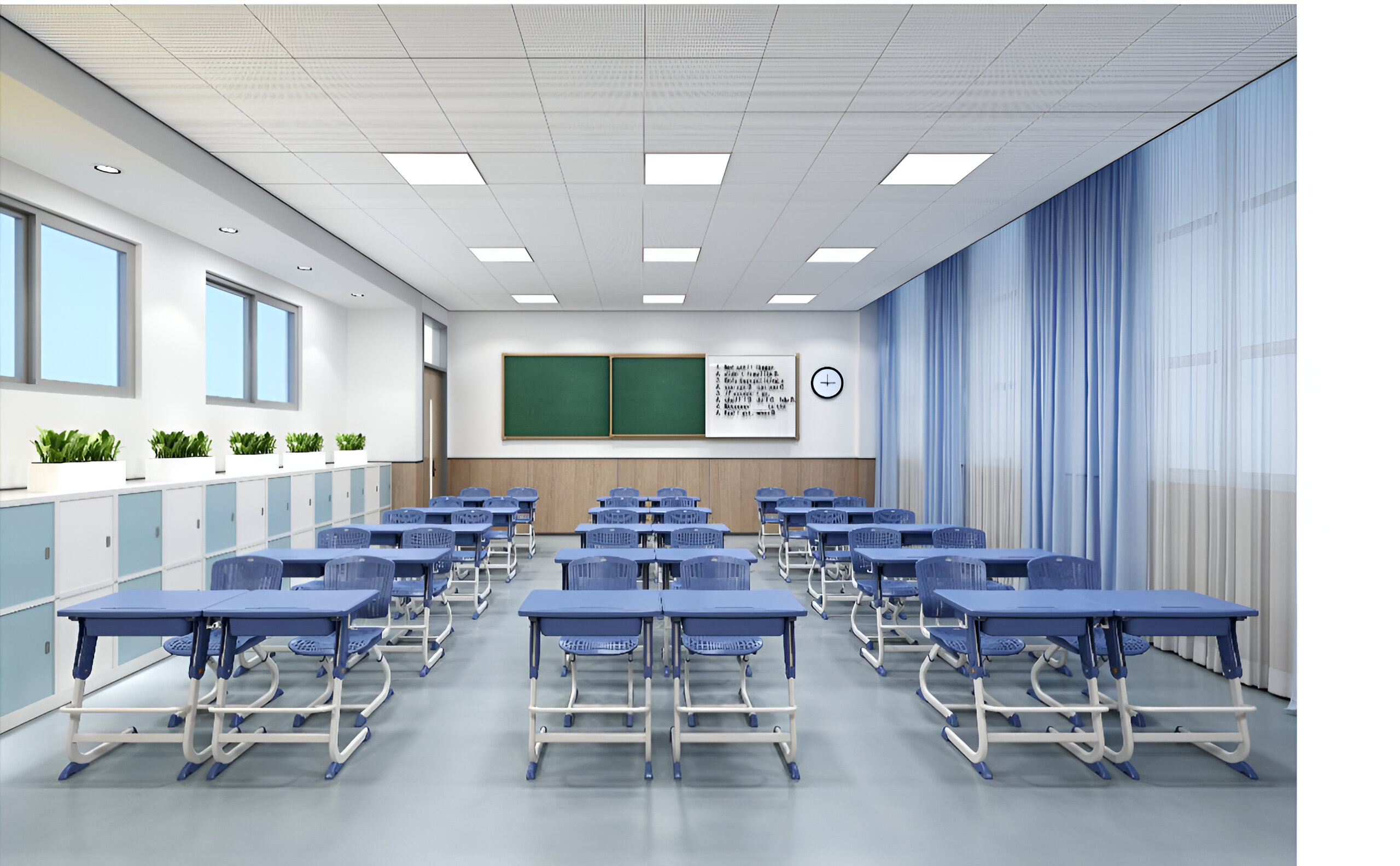Blog
School Furniture in India: A Blend of Comfort, Durability, and Design

A classroom is much further than just four walls and a blackboard. space where children spend most of their day learning literacy, interacting, and growing. In such a setting, the cabinetwork they use plays a pivotal part. From comfort and safety to posture and productivity, good academy cabinetwork lays the foundation for a better literacy experience.
1. Why Choosing the Right School Furniture in India
Matters It directly affects how scholars sit, concentrate, and bear in class.However, scholars may feel tired or develop back pain — especially when they’ve to sit for numerous hours, If the seating is uncomfortable. But when the cabinetwork is designed well. It helps with better posture and creates a healthy literacy terrain. In India, utmost classrooms have numerous scholars. That’s why the right cabinetwork also helps manage space more. It allows smooth movement and keeps the classroom more systematized
2. What Makes Good School Furniture for Different Age Groups
Furniture for Different Age Groups Furniture for a first- grade pupil should noway be the same as that for a high academy pupil. Each age group has different requirements, so age-applicable sizing is veritably important. youngish children need chairpersons and tables with rounded edges, bright colours, and lower height
3. Top Features to Look for in Modern School Furniture
First, suppose about comfort and posture.However, that’s not just annoying it’s distracting, If a president makes a pupil shift every many twinkles. ultramodern cabinetwork should encourage better sitting habits without making the child indeed notice it. Soft edges, slight inflexibility, and back support are n’t extras presently; they’re essential. also there’s continuity. In utmost Indian classrooms, cabinetwork goes through a lot — shifting, dragging, leaning, writing, and indeed the occasional jump! It should be made to last, without wobbling or breaking within a time. Mobility and modularity are also big advantages moment. seminaries need to reconfigure spaces for different conditioning — from individual study to group work. Furniture that’s light but stable, stackable, or galère gives seminaries that inflexibility. And let’s not forget erected- in storehouse. A small rack under the office or a hook for bags can make a big difference in keeping effects tidy. So when choosing cabinetwork, go beyond the roster filmland. Ask yourself, is this design making life easier for both the pupil and the schoolteacher?
4. Custom and Modular School Furniture Options in India
That’s where custom cabinetwork helps. You can choose colours, accoutrements , sizes, and indeed office shapes grounded on your classroom design. Modular cabinetwork is also popular. These pieces can be moved or rearranged fluently
5. Stylish Accoutrements Used for Classroom Furniture in India
Rounded edges and smooth home stretches make it perfect for preschool and primary classrooms where safety is a top precedence. Plywood or MDF( medium- viscosity fibreboard) are also extensively used, especially in modular setups. These accoutrements are cost-effective, easy to work with, and great for customised cabinetwork. The kind of material used in academy cabinetwork can affect everything — from how long it lasts to how comfortable it feels for scholars. Every academy has its own requirements, and luckily, the request offers a wide variety of accoutrements to choose from. still, they can be heavy and a bit precious to maintain. Essence cabinetwork, in discrepancy, is made to handle rough use. It works best in high- business seminaries where cabinetwork gets dragged, banged, and shifted every day. sword or iron frames are strong and stay stable over time. Indeed, if the classroom layout changes frequently, essence pieces can take the wear and tear without falling piecemeal. also there’s plastic—light, bright, and safe. You’ll frequently find plastic cabinetwork in preschools or inferior classes. It’s easy to clean, comes in fun colours, and doesn’t have sharp edges. The kind of material used in academy cabinetwork can affect everything—from how long it lasts to how comfortable it feels for scholars. Every academy has its own requirements, and luckily, the request offers a wide variety of accoutrements to choose from.
6. Where to Buy the Best School Furniture in India
These merchandisers generally offer inflexibility in colours, accoutrements, and confines. Plus, it’s easier to coordinate if you want to match the cabinetwork with classroom themes or available space. For institutions that need to furnish several classrooms at once, noncommercial requests are a practical choice. Buying in bulk frequently comes with abatements, and suppliers in large metropolises like Delhi, Jaipur, or Mumbai can handle big orders with ease. also there are online platforms that are growing presto in fashionability. designed, modular cabinetwork that can be ordered and delivered anywhere in the country. They save time and give you a variety of options to browse without stepping out. Practical Tips Before You Finalize School Furniture If you’re planning to upgrade or buy academy cabinetwork, it helps to decelerate down and suppose virtually. Don’t just go by roster prints or trending styles. Begin by measuring your classrooms duly. A few centimetres off might not feel like a big deal—until you realise divisions are blocking walkways or windows. seminaries infrequently have time to chase down after-deal problems; it’s better to be clear from the start. However, buying in bulk frequently saves costs, If you’re setting up multiple apartments. But don’t place a full order blindly. Try getting as many samples delivered first. When you see the product physically—the material, finishing, and size—it’s easier to make confident opinions. Final studies More Than Just Furniture Most of the time, academy cabinetwork doesn’t get important attention until it starts getting in the way. An office that wobbles, a president that pinches your reverse, or a room that feels overcrowded—these effects don’t just beget discomfort. Over time, they affect how scholars learn and how preceptors manage the space. But when the cabinetwork actually fits the room, supports the body, and lasts without constant repairs, it makes diurnal academy life feel more in control. More comfortable. In India, further seminaries are sluggishly recognising that learning spaces count not
Sources” section
One Love Foundation. “5 Easy Ways to Communicate Better in Your Relationships.” One Love Foundation, https://www.joinonelove.org/learn/5-easy-ways-to-communicate-better-in-your-relationships. Accessed 25 July 2025.
Arko Business Group. “School Furniture in India: A Blend of Comfort, Durability, and Design.” Arko Business Group, 23 July 2025, https://arkobusinessgroup.com/school-furniture-in-india-a-blend-of-comfort-durability-and-design. Accessed 25 July 2025.
American Academy of Ophthalmology. “Eyeglass Frame Materials.” AAO.org, https://www.aao.org/eye-health/glasses-contacts/eyeglass-frame-materials. Accessed 25 July 2025.
Erudio Hub. “The classroom is no longer just four walls and a chalkboard. We’re entering a new era of learning…” Facebook, 25 Apr. 2022, https://www.facebook.com/erudiohub/posts/the-classroom-is-no-longer-just-four-walls-and-a-chalkboard were-entering-a-new-e/1203671658121203. Accessed 25 July 2025.
Related Posts
Best School Furniture in India
-
Posted by
arkobusinessgroup11
- 0 comments
Modular School Furniture: The Smart Classrooms in India
-
Posted by
arkobusinessgroup11
- 0 comments

